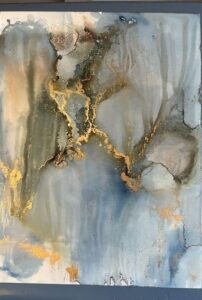Have you ever stood in front of a piece of traditional ink painting and felt a hush fall over you? The artistry, the nuance, the simply stunning play of light and shadow? Among its many styles, thetingology.com/class 酒精墨水畫—alcohol ink painting—brings together elegance and spontaneity on a blank canvas, letting emotion flow through black and gray, and sometimes, bursts of deep color.
Traditional ink painting began thousands of years ago, rooted in East Asian culture, most notably Chinese, Japanese, and Korean traditions. The art has always emphasized capturing the soul of a subject instead of overloading it with unnecessary detail. There’s an old proverb: “Painting is like poetry without words.” Indeed, every brushstroke counts. Each mark serves a story.
Why do ink paintings never seem to age? Simplicity. The power of negative space. Artists like Sesshū Tōyō or Zhao Mengfu didn’t just paint mountains; they breathed life into mist-shrouded peaks and ancient pines. These paintings pull us in with their restraint—every omission filled with intent. Sometimes landscapes seem to float, dissolving into the untouched white.
Watching a master work with ink is like witnessing a tightrope walker. One misstep, and everything shifts. Practitioners must commit, but also embrace happy accidents. There’s real philosophy here—wabi-sabi, a love of flaws and impermanence. The unpredictable flow echoes the fluidity of thought.
If you ask an ink painter how much control they have, they might grin and say, “Only as much as the ink allows.” Tools matter too: Brushes soft as clouds, paper that drinks up liquid with its every fiber, ink ground from solid sticks, water carefully measured. The personality of every painting is shaped by the artist’s hand and heart.
Many modern creators blend old and new, dabbling in 酒精墨水畫 with fresh pigments and surfaces. Each experiment reveals more. This dance between tradition and innovation keeps the art alive, pulsing through contemporary studios and galleries.